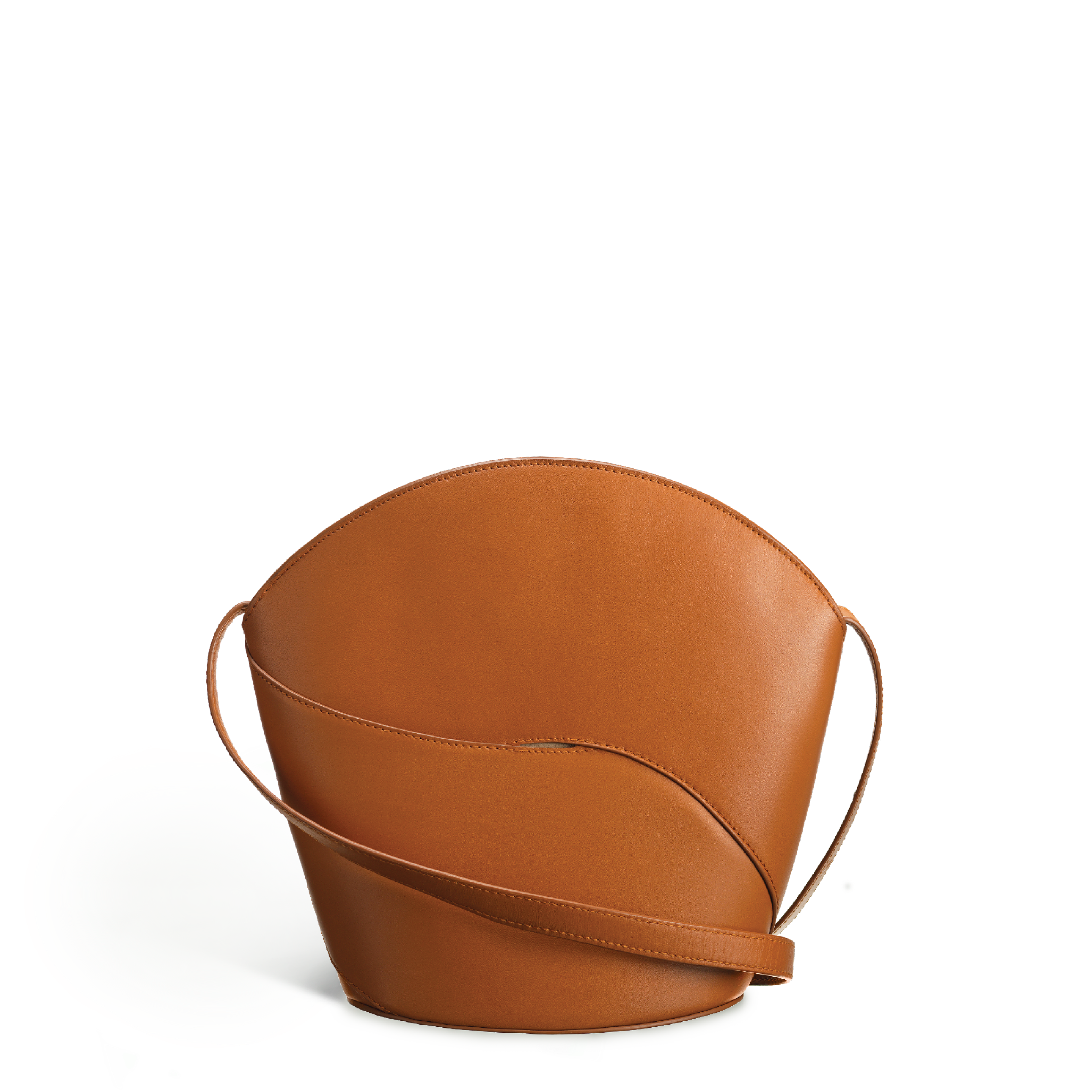Tijmen Smeulders
When Maeden asked product designer Tijmen Smeulders to design a bag he was immediately taken by the idea of a bucket, because of its characteristics of being a stand-alone product. He went with his very own, radically different take on a day-to-day essential that is this Oru-bag design for Maeden: seamlessly fusing together different elements of the bag which then gave way to additions like a clever little case on the inside. The overall look is pure and balanced, carefully concealing the many hours of constructing and craftsmanship that went into it.
You work with an extensive variety of materials, and your designs are material driven. What was it like to work with Maeden-leather?
To be fair my first association with leather was: classic, more conventional, maybe a little old fashioned. Yet then I saw firsthand what Christian (Heikoop, Maeden’s art director) had been working on and my whole perspective shifted. The color, the quality of the first samples were contemporary and technically captivating. Very smooth, very soft, almost like a futuristic fabric. In a positive sense, that is. All over, innovative. The texture is so natural and clean, and then those shades: deep deep inky blue, deep deep shades of Merlot-red. It’s mostly the combination of that leather with the level of luster and color tones that made it quite spectacular. My hands immediately started to itch to investigate further.
How is your design approach reflected in this bag?
Often designers start out with a concept, a story. My method is pretty much the other way around since I always start out with the material (as mentioned), but also technique and function. I have a closer look at which elements could potentially be canceled out, replaced, or how to let the different elements fuse together. After a lot of trial and error the construction that really stuck with me for the bag was this intriguing cross-over of leather panels and then pulling a string through the middle, which creates a narrow oval opening at the front and back. The design becomes self-explanatory; the established volume provides leads to where to incorporate necessary functions. Meaning, the backside of the cross-over lends itself for a pocket, the handle follows the strap in the center, the side panels morph into shoulder straps following the corners. Instead of a collage of separate elements, like with more traditional bags, everything flows together logically. Essential for the overall image. I was continuously looking for the perfect line curving in the right direction. This curve had to be executed perfectly, not just on a flat sketch but translated to the 3D product. That comes down to expert tricks of the trade and it’s extremely labor-intensive. The construction has been tweaked endlessly; it comes down to mere millimeters. You can’t tell on the outside which looks perfectly clean, but on the inside the complexity of the patterns is on full display.
Is it important to you that a design is self-explanatory?
Yes, the design needs to make itself relevant, it shouldn’t need an external narrative. When I do an exhibition for example, I always try to work towards designs that don’t require an explanation, that explain and legitimize themselves. That’s key to my work. The fusing together of elements – material, texture, decoration, functionalities – is at the heart of all I do. This porcelain pitcher that I made for a Japanese brand from Arita doesn’t include a handle. Better yet, it is sized to fit perfectly into both the hand of a man and a woman. It doesn’t need anything else.
What was different about designing a fashion instead of an interior piece?
Well, we started out with a fully rounded bottom for this bag, such a pure shape. Aesthetically, this looked beautiful. Yet it wasn’t very practical when holding the bag against the body. So, to answer to that human ratio, we decided to go with an oval bottom which is a bit flatter and therefore connects better to the body’s silhouette. Wear it over your shoulder, in your hands, at hip height and the design adjusts to your body. As a product designer mainly for interior, I don’t really adhere to the wearer that way. Of course, I think of ergonomics when designing, say, a chair but it’s not the same. It made for an interesting new perspective.
Your bag is called Oru (‘to bend’ in Japanese). As a Dutch designer you work in Japan a lot because of their craftsmanship. How do you feel about Maeden aiming to bring back crafts to The Netherlands?
The reason I went to Japan in the first place is because of the extraordinary craftsmanship that’s hard to come by these days in The Netherlands. I applaud Maeden for wanting to reintroduce crafts locally. Crafts are synonymous to quality, dedicated attention and preserving knowledge. Especially the south of The Netherlands, Brabant, was known for its rich leather tradition for a long time. I appreciate how Maeden aims to highlight Dutch crafts internationally. I think it’s important to know where designs come from. Not just which country it derives from, but also the origin story. It’s an asset to focus on something relatively small like true craftsmanship, which is manageable, clear, small-scale, and still holds international allure. To have that as your starting point as a designer keeps you close to the material and in conversation with the artisans. That’s entirely different than sending a sketch to a huge foreign factory and just seeing what comes of it. This thorough process makes for a treasured quality product, and I think as the person wearing it you can really see and sense that.








